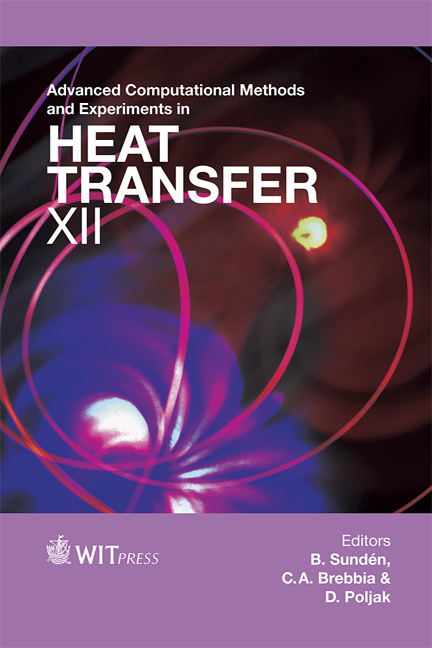Roll-bond Condenser In A Two-phase Thermosyphon Loop For Power Electronics Cooling
Price
Free (open access)
Transaction
Volume
75
Pages
13
Page Range
207 - 219
Published
2012
Size
1,421 kb
Paper DOI
10.2495/HT120181
Copyright
WIT Press
Author(s)
F. Agostini & T. Gradinger
Abstract
In this paper a thermosyphon design for power electronics cooling is presented and supported by an extensive experimental campaign. The work tackles the problem of finding a suitable substitute of common air cooled heat sinks towards a highly thermally performing device overcoming the bottleneck of limited fin efficiency and proposing a device with reduced air pressure drop. The basic thermal circuit is based on a two-phase thermosyphon system. The evaporator channels are such that the so-called bubble-pumping effect is present, facilitating the natural movement of the fluid in the device. The degree of novelty is introduced by the usage of a condenser made of roll-bonded panels. A common double-sided evaporator body collects the heat generated by two power modules. The employed fluid is refrigerant R245fa. The paper presents the thermal performance of the described two-phase cooler in a forced convection regime (air side). The experimental campaign covers total power losses ranging from 1 to 4 kW and different air mass flow rates. The paper presents and demonstrates an attractive cooling solution for power electronics modules based on a two-phase cooler. Keywords: electronics, cooling, thermosyphon, two-phase, condenser, forced convection, roll-bond. 1 Introduction Research toward efficient cooling systems of power electronics devices represent a challenge and an important target in many electronic applications. In this direction pumpless two-phase cooling devices, so-called thermosyphons, represent an important benefit for the thermal management.
Keywords
electronics, cooling, thermosyphon, two-phase, condenser, forced convection, roll-bond.





